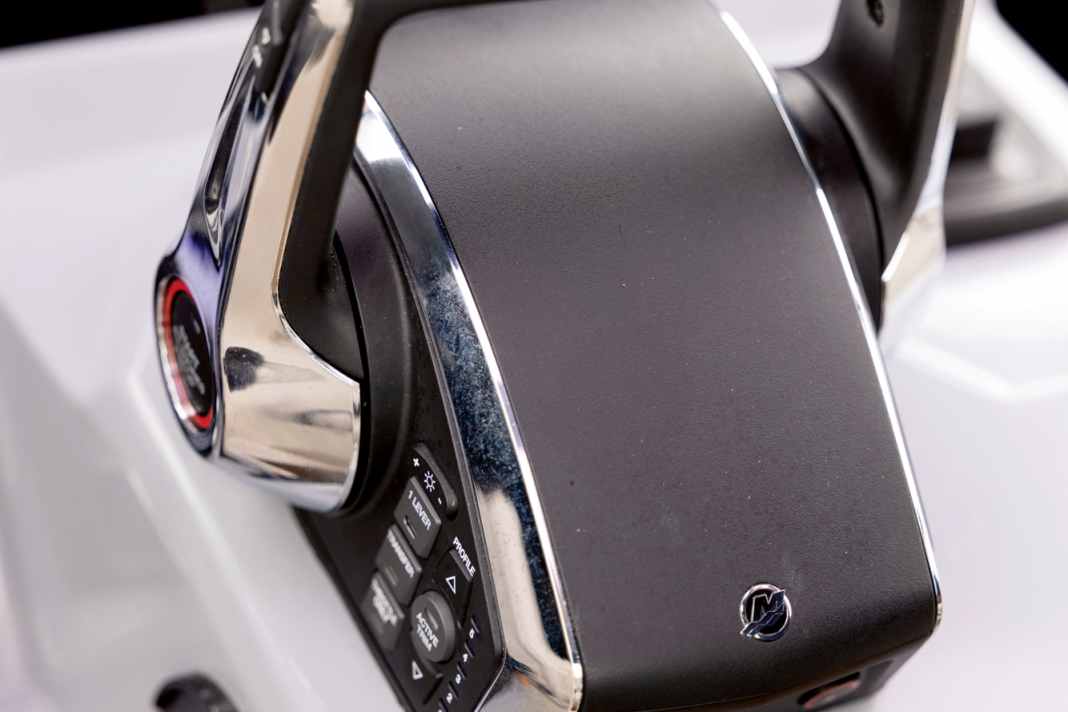




Gliders are particularly sensitive in this respect. Once the "travelling party" has gathered on the rear bench, problems can arise during the transition to gliding. The simplest solution: During the transition phase, everyone must be as far forwards as possible.
If provisions and holiday luggage are added to the front passengers, the boat is constantly gliding downhill. This means that the bow is stuck in the sea. This costs speed and fuel and makes life difficult for the helmsman.
Power trim while driving
If you want to go uphill again, you have to shift and reduce weight. Because weight shifting does not always produce the desired result and the back and forth of the passengers is not a permanent solution, engine manufacturers have invented the power trim. This allows more powerful outboards and sterndrives to be raised and lowered at the touch of a button while travelling. Operating the power trim requires some experience, which is easiest to acquire by learning by doing. If the stern of the boat is pushed down a lot and the bow is pointing skywards, the outboard motors or the sterndrive are tilted too far (too high). A short press on the down side of the trim switch usually provides an immediate remedy.
If the stern rises and the bow is deep in the water, the outboard motor or the sterndrive must be raised by pressing the up side of the switch. In the optimum trim position or floating position, the boat lies almost parallel (raised two to four degrees at the front) on the water.
To transition to planing, outboards or the sterndrive are trimmed all the way down against the transom. This shortens the transition phase, especially when water skiing, and the bow stays where it belongs - on the water. Once planing speed is reached, the motor and sterndrive are raised as far as the rpm and speed increase.
You should pay attention to this
A recognisable feature: if trimmed correctly, the point at which the spray water deflected to the side by the chine becomes clearly visible moves far aft. If the engine or sterndrive and therefore the boat are not lifted far enough, the higher frictional resistance reduces the engine speed and speed. You will be travelling slower and less economically.
Too much trim (engine and drive too high) causes the bow to bob up and down and reduces course stability. In addition, a propeller that is raised too high can quickly mutate into a fan; it then draws air instead of water. This can be recognised by the fact that the engine speed increases, but the speed tends to decrease. In rough water, the boat is difficult to control with too much trim.
